TAGGED AS: AMC, crime drama, television, TV
In Monday’s Better Call Saul finale episode, “Saul Gone,” audiences witnessed the emotional conclusion of Breaking Bad’s 15-year-long journey. When viewers first set eyes on the greedy, fast-talking, criminal lawyer Saul Goodman (Bob Odenkirk) in Breaking Bad’s second season, it was evident Odenkirk’s role in the groundbreaking series was to provide a steady dose of levity as the program delved further into its violent, blue meth-fueled depths.
We needed that Saul Goodman to grease the proverbial wheels, to pull the strings, and enable Walter White’s (Bryan Cranston) alter-ego Heisenberg to wreak havoc and reap the rewards that came with these evil deeds. It was the TV anti-hero catharsis audiences have flocked to, again and again. So when Vince Gilligan and Peter Gould created a prequel series focusing on young Jimmy McGill (Goodman’s real identity) and his journey from bumbling mail room clerk to notorious criminal lawyer was announced, it was tough to know just what we were in for.
Through its six-season story, Better Call Saul accomplished what many proclaimed impossible: It stepped out of Breaking Bad’s imposing shadow and found its own narrative footing. That’s a noteworthy achievement when you consider how Heisenberg’s exploits, with sidekick Jesse Pinkman (Aaron Paul) in tow, became such a cultural phenomenon.
In fact, hear us out here, it has even surpassed Breaking Bad. Here are 6 reasons why Better Call Saul is better than Breaking Bad.
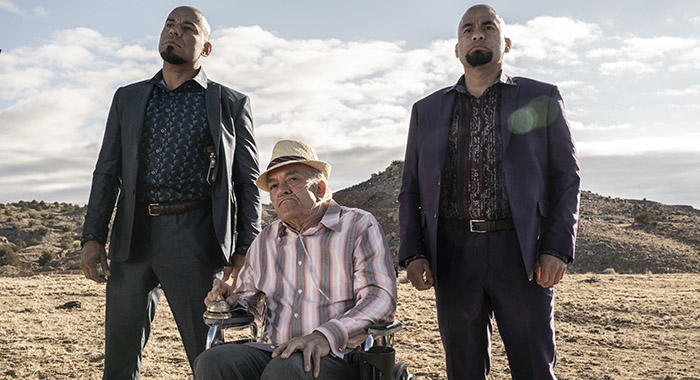
(Photo by Greg Lewis/AMC/Sony Pictures Television)
Better Call Saul’s slow-burn exploration of character and morality, in the courtroom and the criminal underworld, cemented a different, contemplative flavor than its predecessor’s “Mr. Chips to Scarface” thematics. Slowly, steadily, with the help of impeccable writing and top-notch performances by every single cast member, led by the Emmy-nominated work of Odenkirk and Rhea Seehorn, Better Call Saul improved with age.
Jimmy wasn’t just a criminal building his empire; he had a family legacy to contend with in Chuck (Michael McKean), though Jimmy’s shenanigans with Chuck ended tragically. There was also the professional family at law firm Hamlin Hamlin McGill. A disgruntled Jimmy and Kim plotted revenge against Howard Hamlin (Patrick Fabian), unfortunately making him pay dearly for their petty differences.
There was personal drama on Breaking Bad — Walter tore his family apart and got innocent people killed — but Better Call Saul succeeds with more subtle drama than straight crime story.
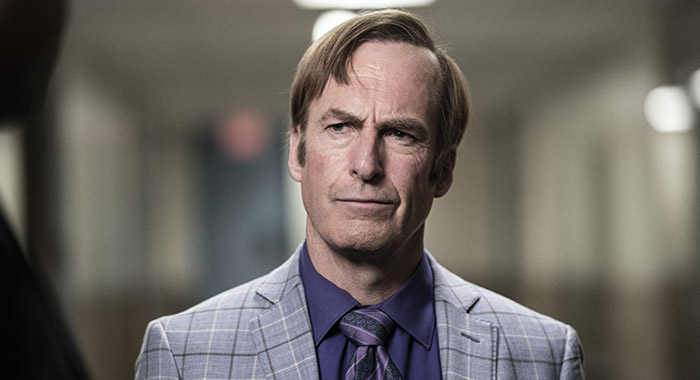
(Photo by Greg Lewis/AMC/Sony Pictures Television)
If you want a sympathetic villain, it helps to cast Odenkirk. He could make you love Jimmy at his most destructive. We all have Jimmys in our lives, people who will never just do what they’re told, who always have some other scheme they’re working. They can be exhausting, but Odenkirk sold Jimmy’s sincerity so the audience went along with him just as his cohorts did.
The success of Jimmy’s ride is monumental considering we already knew how Saul Goodman turned out. It’s one thing to sell that a bad guy experienced trauma that turned him evil; it’s quite another to show Jimmy was always a schemer. Saul Goodman was inevitable, and yet you don’t hate him. People rooted for antihero Heisenberg, too, but they probably shouldn’t have.
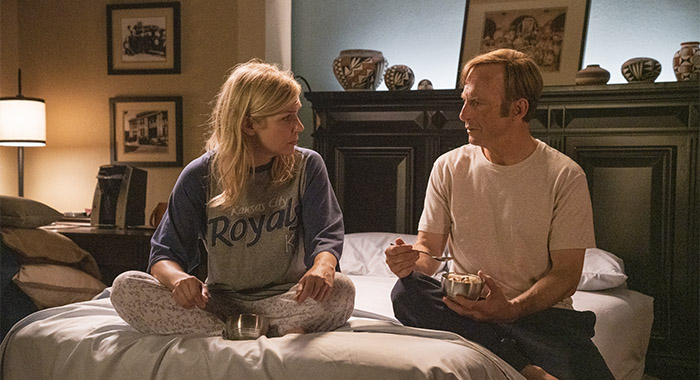
(Photo by Greg Lewis/AMC/Sony Pictures Television)
Even Gilligan and Gould were shocked at how some Breaking Bad fans turned on their female characters. Some viewers felt Skyler White (Anna Gunn) held her husband back. Gilligan and Gould’s intention was that she was the voice of reason. You do not want to be married to a Heisenberg.
There was no such misunderstanding on Better Call Saul. Kim Wexler quickly became the hero of the show. Like Jimmy, she schemed and sought revenge, but she had a stronger moral compass than Jimmy. Throughout the show, fans were more worried that Kim would die before Breaking Bad than whether or not Jimmy would live after.
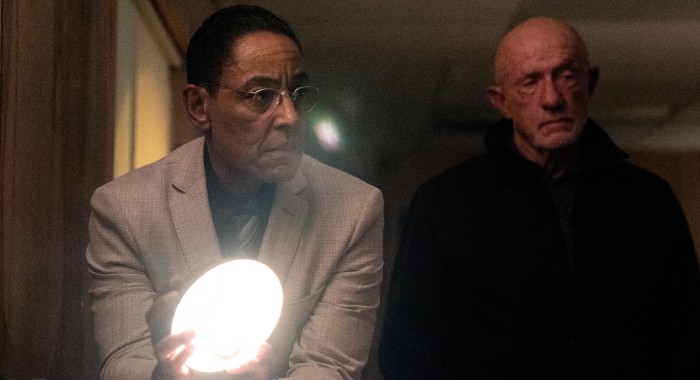
(Photo by Greg Lewis/AMC/Sony Pictures Television)
Better Call Saul was able to bring back Breaking Bad favorites Gus Fring (Giancarlo Esposito), Mike Ehrmantraut (Jonathan Banks), and Hector Salamanca (Mark Margolis). The prequel took place before their characters died on Breaking Bad.
It was the show’s new characters, however, who opened up the world beyond Breaking Bad.
Howard may have been a smug bastard, but he wasn’t wrong about Jimmy. Nacho Varga (Michael Mando) got roped into a life of crime he never wanted. Chuck was the biggest tragedy of Jimmy’s life. Instead of changing his ways, Jimmy doubled down. And Lalo Salamanca (Tony Dalton) brought a terrifying new face to the Salamanca empire, with his calm, cool, and collected simmering intimidation.
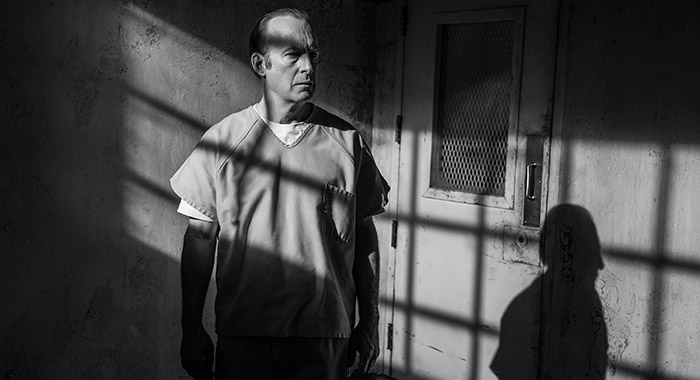
(Photo by Greg Lewis/AMC/Sony Pictures Television)
Jimmy finally did the right thing and confessed to all his crimes, accepting his fate to spend the rest of his life in prison. But he got to live and relieve Kim of the weight of her involvement. The series finale showed that Jimmy had been coping with regret before audiences even knew it.
“What would you do if you had a time machine?”
That question is first asked by Saul Goodman in a flashback scene to Mike Ehrmantraut in the opening moments of Better Call Saul’s series finale and later posed to Walter White in yet another revelatory moment from the fugitive lawyer’s past. The question, as Walter drives home to Saul, has more to do with regret than science fiction, and it threads the narrative needle through the final episode.
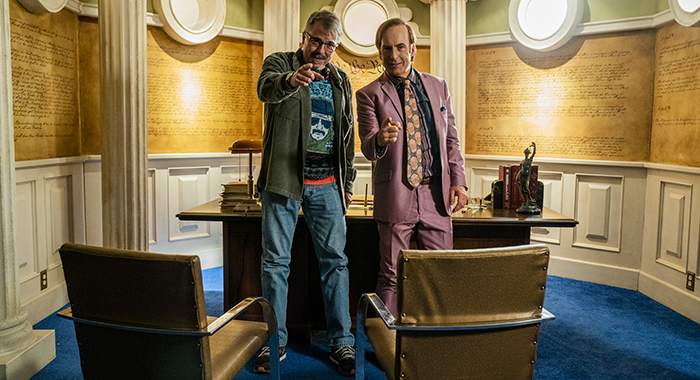
(Photo by Greg Lewis/AMC/Sony Pictures Television)
Better Call Saul has a higher Tomatometer score than Breaking Bad. Sure, it’s only 98% to 96%, but that’s a slight improvement on an already great show. Most of Breaking Bad’s Rotten reviews came in its first season, so critics may not have known what they were in for. By the time Better Call Saul premiered, critics could view the new series in context.
Then again, the Audience Score for Better Call Saul at the time of publication trailed Breaking Bad 96% to 97% — so there’s that 1 percent to chew over.